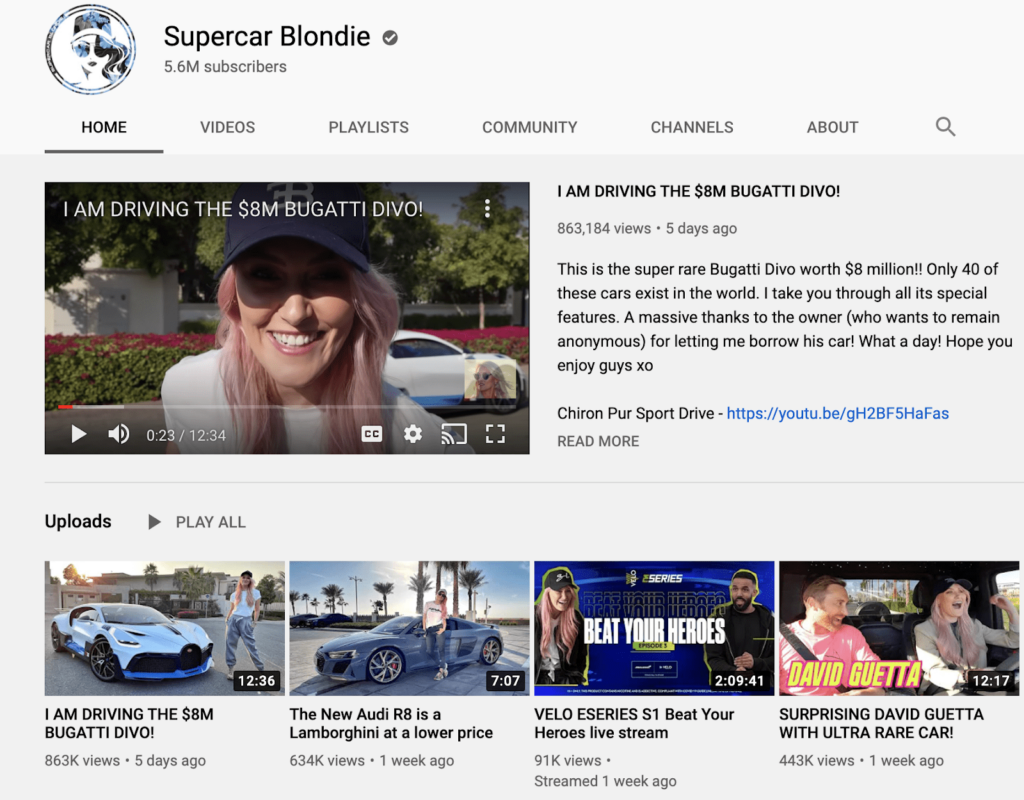Influencer marketing exploded over the past five years, and it is estimated to grow to a $13.8 Billion industry in 2021.
To better leverage this growing marketing strategy, it’s helpful to understand the different types of social media influencers that can work with your brand.
Word of mouth continues to be a valued way for buyers to make decisions. And the more people that are talking about your products and sharing recommendations on social media, the stronger your brand will be in the digital age.
And marketing messages from different types of social media influencers reach different audiences and achieve varying goals. Depending on the nature of your business, the level or type of social media influencer that makes the most sense to partner with you could be different.
This guide lays out all of the categories of influencers to support your marketing goals and social media strategies.
What Are Social Media Influencers?
Social media influencers are people that have established credibility in a certain area or field and share with audiences over social networks. These influencers have built strong relationships on social channels and have respected opinions about the products and services that they recommend.
Brands work with them to build awareness, promote product launches, answer questions from potential customers, generate content, offer discounts, and encourage sales.
The power of social media influencers comes from their reach with large and engaged groups of followers and the level of authenticity they have on their platforms.
Why Are Social Media Influencers Important For Marketers?
Despite being a relatively new marketing tactic, research has already shown that social media influencers can drive meaningful results for brands.
In the Mediakix Influencer Marketing Survey, it was found that:
- 89% of marketers say ROI from influencer marketing is comparable to or better than other marketing channels.
- 80% of marketers find influencer marketing effective
- 71% of marketers say the quality of customers and traffic from influencer marketing is better than other sources
People are more likely to trust messages from real people over those from brand channels, and working with social media influencers is a strong option for building authentic interactions with companies.
Types of Social Media Influencers
The types of Social media influencers are mainly based on the size of the audience and brand affinity levels.
Keep in mind: higher follower count does not always translate to higher levels of influence so it’s important to understand these different types and the benefits that they each offer brands.
1. Celebrities
People with over a million followers are considered celebrities on social media. You might also hear of them referred to as “mega-influencers”.
They are typically famous for their careers as actors, singers, athletes, or internet personalities. This category is unique in that they have developed the largest followings possible on social media.
If you are looking for reaching massive general audiences and major exposure, celebrities are the best bet, though that comes with a hefty price tag. One post can cost up to hundreds of thousands of dollars.

Primarily enterprise B2C companies gain the most by working with celebrities on social media promotions.
Mostly because these large brands can afford the price tag for a post, but it’s also easier to gain results from consumer products to the influencers’ audiences. Keep in mind though, a paid post will most likely start to lose traction in 2-3 days.
2. Macro Influencers
Macro Influencers include anyone with between 100K and a million followers. They typically rose to fame through the internet and include prominent bloggers, vloggers, podcasters, and social sensations.
Since they are often content creators, they are experts on using social platforms creatively and creating quality user-generated content that will help build brand recognition and visibility.
These types of social media influencers will still have a high price tag to work with but will be more affordable than a celebrity or well-known athlete.

3. Micro Influencers
Micro Influencers have between 1K-100K followers. They are not traditional celebrities but have established themselves as credible sources of recommendations in targeted areas.
Micro influencers have strong rapport and credibility in their niche by building strong, tight-knit communities that are highly engaged.
Since engagement and interaction are high for people in this category, they often have greater chances for conversion with authentic brand messages.

4. Employees
Who are the biggest company insiders? Employees.
Working at a company gives a unique understanding of a business and sharing that on social media can be a powerful way for brands to build trust with potential customers.
They are the people that directly contribute to what makes that company special and activating employees as social media influencers can grow reach, engagement, and leads.
Encouraging sharing on social as part of a company’s culture is a growth strategy at businesses that understand the power of word of mouth marketing and leveraging employees as brand ambassadors. B2B brands tend to flourish with active employee influencers, but B2C companies also benefit, too.
Companies are investing in tools that make it easier to share on social media at work with employee advocacy platforms like EveryoneSocial.
EveryoneSocial is an easy-to-use software platform for employees to create, engage, connect, and share content to social networks. With just a few clicks, teams can create posts, share them with coworkers, and then post them on external social networks.
It’s designed to encourage employees to build personal brands online and share industry news and thought leadership. You can even schedule posts ahead of time to make it more convenient and fit into your work schedule.

5. Customers
Referral marketing works. In fact, referrals drive some of the highest conversion rates among all marketing channels.
When people are looking for recommendations for products or services, they trust customers that use them and have positive feedback.
And referrals bring in more value over time, as well. Customers referred by a friend or other customers have a 16% higher lifetime value than non-referred ones.
Reviews and testimonials on social media have a strong influence on buyers and keep your company’s products top of mind.
They can share how the product solved challenges or tips on how to use them most effectively.
As it becomes more and more important for potential buyers to find authentic customer feedback shared on social, companies are establishing customer advocacy programs to encourage and incentivize customers to provide recommendations online.

6. Brand Fans
While they may not be actual customers, brand fans share and engage with companies on social media because they appreciate their vision, marketing, and products.
Maybe they can’t afford the product yet or they are in a different industry, but they admire what the brand is doing and support and mention it on social media.
Fans of the brand help connect different audiences that might not currently be buyers of the product, but at some point in the future, they may become customers.
Brand fans increase brand visibility to wider networks and drive interest in communities that may not typically be reached by brands directly.

Which Type of Social Media Influencer is Best?
When you are ready to implement influencer marketing, you must find the best fit to partner with your brand to achieve your goals.
While each type of influencer might work for your brand, you will want to consider a few factors to find the right match:
1. Audience
An important part of finding the right social media influencer for your brand is who they are reaching.
Are they trusted and followed by your target audience? Do they have a positive reputation and credibility in your niche?
You’ll want the audience of the influencer that you are working with to match with the ideal buyer persona of your products or services.
2. Platform Expertise
You’ll want to find consistent content creators on the platforms that your audience is most likely to use and spend time with. So influencers that are heavy users of the platforms that your target audiences use will likely produce the best results.
Each platform has a specific style and the content that gets the highest engagement will vary.
For B2B brands, LinkedIn is a top choice for working with influencers and encouraging employee and customer content creation.
B2C brands may want to work with influencers on Facebook and Twitter.
Video reviews and product tests work well in video content on YouTube.
Be sure to choose the influencers with audiences that fit the most with your brand.
3. Authentic Content
People can tell when reviews feel phony or staged. You want to find people to advocate for your products with enthusiasm and strong interest and knowledge about the industry.
Relatable and non-salesy approaches are crucial for delivering trusted brand messages from influencers.
That’s why finding fans of your brand is the best place to start for developing social media influencer relationships.
4. Campaign Goals
Think about the goals that you have for your brand and marketing strategy. If you are trying to get the widest possible reach and general visibility on your products, you will want to partner with social influencers with high follower accounts.
If you’re more interested in driving engagement and conversions, you’re better off with macro or micro influencers that are interacting with their communities often and responding to comments and questions.
Make sure that your goals align with those of the influencers that you work with to create long-lasting and mutually beneficial partnerships.
















